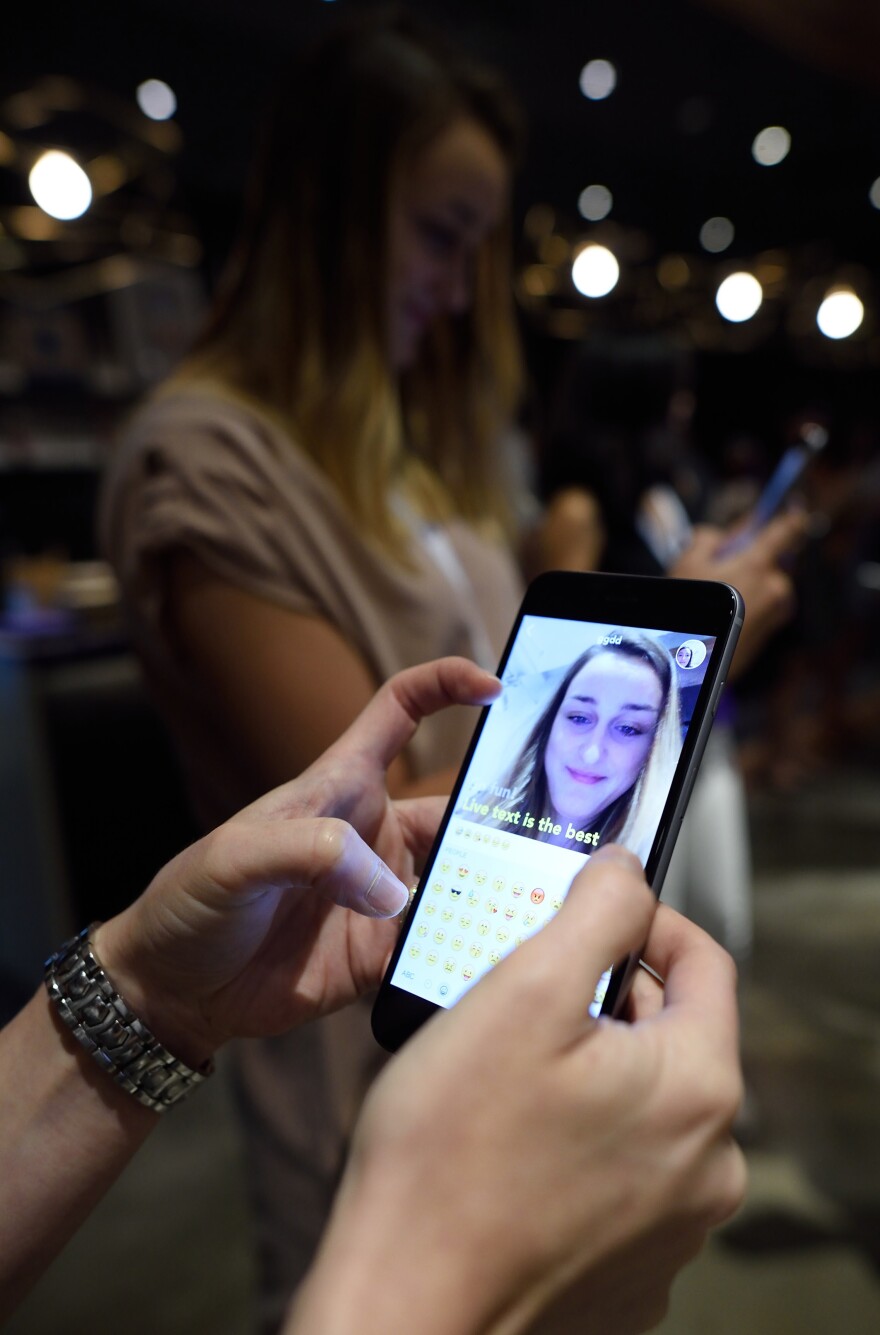Texts, instant messages, video calls, Snapchats, Facebook messages, direct tweets or Instagrams — with so many ways to communicate electronically, one would think that all the variations have been exhausted. And yet, developers keep hitting us with more.
Yahoo just launched a new video messenger app called Livetext, which allows users to send videos with one catch: There's no sound.
It's like if FaceTime had a baby with Charlie Chaplin and Snapchat.
The way it works is you click on a person you want to talk to, and your face automatically appears on screen as a video. Then you can type your message, which appears over your video, Snapchat-style.
"We wanted to create a new way to communicate, blending the simplicity of texting with the emotion and immediacy of live video, to make your experience spontaneous and real," said Yahoo's Adam Cahan at the media launch in New York City.

By doing away with audio, Livetext overcomes the factor that makes other apps unusable in different contexts: Face it, you wouldn't FaceTime at work, or in the library, or at a concert. But you can use Livetext wherever, whenever, without needing headphones. It's not "all-consuming" like other forms of communication, Cahan said.
There are some drawbacks with Livetext, though — for example, the angle that you text at is definitely not the angle you want people staring at while you talk. And of course, Livetext is not a good option for a bathroom texter.
Whether the app will be successful is still to be seen, but it does bring to mind the question — why? Do we truly need more ways to communicate telephonically?
A 2013 study of technology use found that 60 percent of the time we spend talking with loved ones was done via social media or other technology. And there are certainly a wide variety of options for connecting with them, and the preferred method may depend on the person.
"I think that in an age of ubiquitous computing and exciting new apps, it's important not to lose sight of the fact that what people still want to do is reach out to people that they know," said Scott Campbell, a University of Michigan telecommunications professor who studies mobile communications.
Apps that incorporate images with text — like Snapchat, Instagram, and now Livetext — do give more context. Instead of just typing "I'm bored," an image shows the surroundings and the emotion behind why that might be.
Livetext's immediacy and the ability to see that someone is there and actively participating in the telephonic conversation, Campbell says, lends to this expectation we have of one another in the digital age. We expect our friends and families to be available to talk at any time, anywhere. If someone doesn't get back to you in a short period of time, this is surprising and sometimes even alarming.
The onslaught of these apps probably won't stop any time soon, Campbell hypothesizes.
"Eventually, there are going to be a lot of things that are tried, lot of things that will fill a certain niche of users, even professional niches," Campbell said. "But there are still going to be more basic versions that everyone can use.
And if you find your phone getting cluttered with a slew of different communication apps, apps like Disa or Snowball aim to aggregate all of your messages in one place.
Paige Pfleger is an intern with NPR Digital News.
Copyright 2021 NPR. To see more, visit https://www.npr.org.







